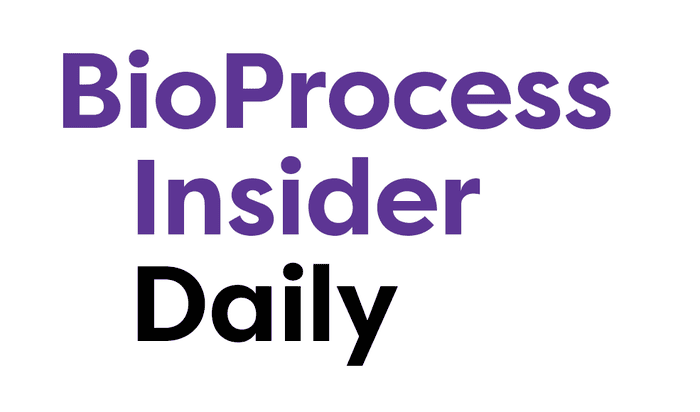
Our BioProcess Insider editorial team is at BPI Europe 2024 to bring you some of the most pertinent coverage from across the conference hall and exhibition floor here in Vienna.
Follow our coverage throughout the event!
Boehringer: New modalities driving paradigm shift in biomanufacturingBoehringer: New modalities driving paradigm shift in biomanufacturing
The “third wave” of biologics incorporates highly diverse modalities with a range of complexities triggering a paradigm shift in manufacturing, says Boehringer Ingelheim.

With over 30 years of experience, the senior advisor for Biopharmaceuticals at at Boehringer Ingelheim, Uwe Buecheler, has witnessed and participated in the various waves of biologics development and commercialization.
The first wave, spanning roughly 1997 to 2010, focused mostly on Tumor Necrosis Factor (TNF) and cancer monoclonal antibodies (mAb), Buecheler told delegates at BPI Europe 2024 in Vienna, Austria today. This was followed over the next decade by continued mAb innovation in immune-oncology and immunology, with an eye on antibody derivatives such as Ab fragments and bispecifics.
This has brought us to a place where 60-70 metric tons of glycol-proteins are produced annually for patients globally from well-understood high-output, large-scale stainless-steel sites, complemented with single-use and modular technologies and facilities. He highlighted Boehringer’s own site down the road from the event – where a recent €700 million ($760 million) investment has added 158,000 L of fermenter capacity, comprising 48 tanks – as an example of industry’s comfort level with the production of such drugs.
But with the “third wave” of biologic innovation, which he said began around 2020, new modalities are creating numerous CMC (Chemistry, Manufacturing, and Controls) issues and triggering a paradigm shift in biomanufacturing.
Part of the complexity stems from the breadth of modalities entering and coming through the clinic, with Buecheler telling delegates the wave includes, but is not limited to: antibody drug conjugates (ADCs), RNA/DNA-based therapeutics, cell and gene therapies (CGTs), life microbial products, phages, and exosomes. Each modality may also comprise various subsets.
With few standardized processes and tried-and-tested equipment, it is no surprise this “endless, rich, modality field is a huge challenge for manufacturing,” he said, adding that CMC issues were minimal for mAbs in later-phase studies but very common for CGTs.
ADC vs CGTs
Again, Buecheler stressed the breadth and difference of new modalities is making current and future biomanufacturing exponentially complicated.
As an example, ADCs – of which there are 15 on the market and nearly 600 in the clinic – pose issues to manufacturers due to complexities pertaining to the highly-toxic and highly-variable payloads, and the diverse linker technologies. But the antibody element is well-characterized from a manufacturing perspective with commercially-approved infrastructure in place.
Viral vector-based gene therapy production, meanwhile, requires a full rethink in the way industry has undertaken biomanufacturing.
“We talk about very modular approaches, not a central digital control system, but more unit operation, automated, data aggregated into a database, and more into the robotics space,” he said, “more like a jigsaw puzzle where things are put together as needed, where the production space is more or less a cleanroom.”
And many unsolved issues exist on the manufacturing and the processing side. “There is no platform technology; there are multiple cell lines, multiple systems used – the majority manually operated. And disposables cannot be automated to the extent like in a stainless-steel facility, which comes with higher labor costs, lower yields, and lack of economies of scale. So there are huge challenges are ahead of us as an industry to fill the work.”
Buecheler highlighted further issues surrounding viral vector production, including:
Innate immunity fighting viral infection
Cell death/Lysis during viral proliferation
Human cell line requirement
Risk of Replication Competent Virus (RCA/RCL)
End-to-end aseptic processing required for large viruses
Likelihood of mutations
Empty virus capsids
As events like BPI Europe demonstrate, industry is rapidly looking to solve these challenges and continues to help transition the sector to feed future modality demand. The move to disposable tech, modular capacity, and multi-product manufacturing units is in full-swing, with the feasibility of multi-modality suites to be further assessed.
There is also an ongoing convergence of processing formats towards more standardized platforms, Buecheler said, with both contract development and manufacturing organizations (CDMOs) specifically driving collaboration with small biotech and biopharma – something that did not occur in the first and second wave.
However, biopharma must remain on its toes, as even while attempting to overcome cell and gene therapy CMC issues, say, “a new wave of innovation is coming.” According to Buecheler, with over 1,000 programs in development, DNA and RNA modulating therapies, which do not use viruses for generating function infected cells, could drive another paradigm shift in the biomanufacturing space, so watch this space!
About the Author
You May Also Like
schedl_b_and_w.jpg?width=100&auto=webp&quality=80&disable=upscale)
schedl_b_and_w.jpg?width=400&auto=webp&quality=80&disable=upscale)






